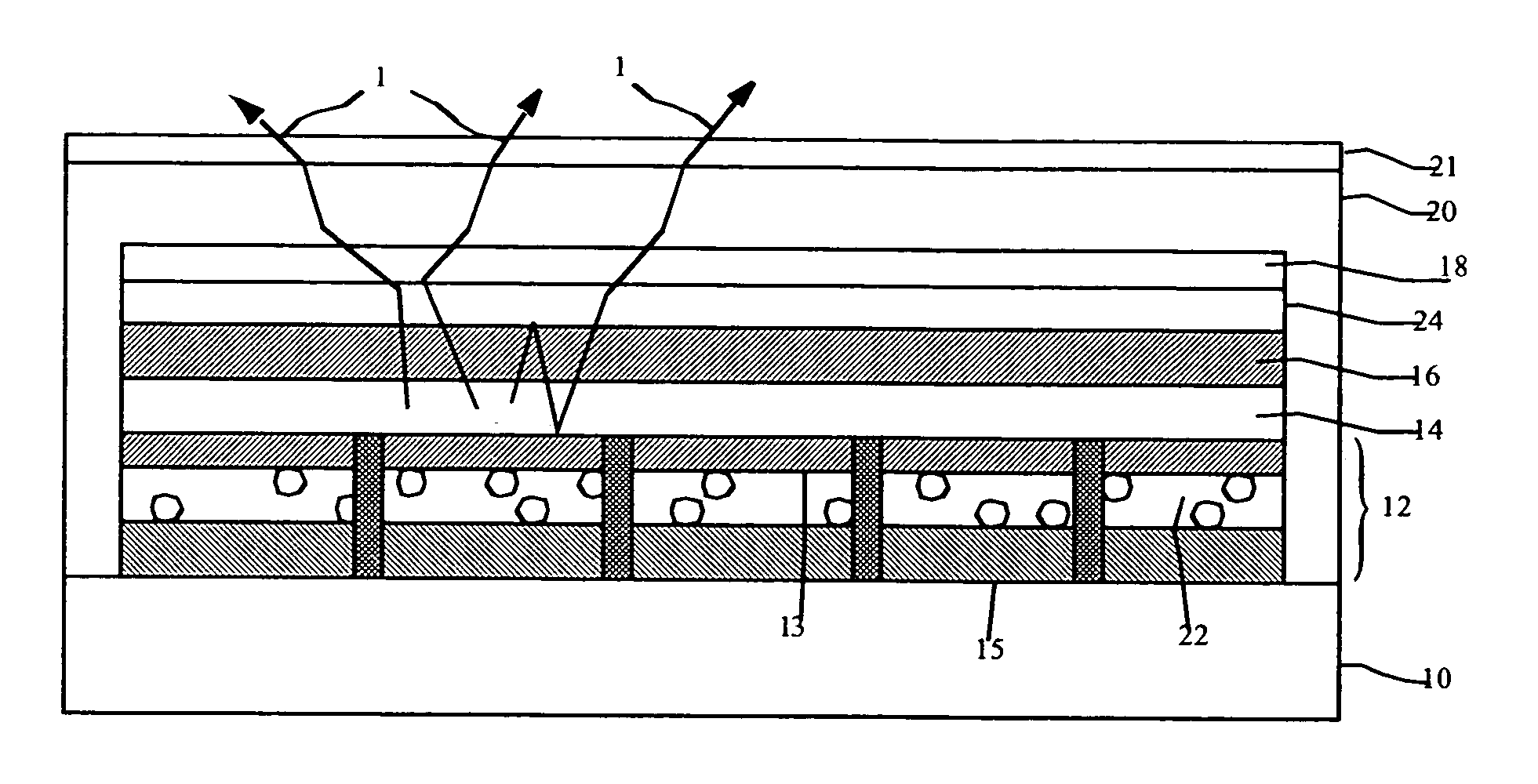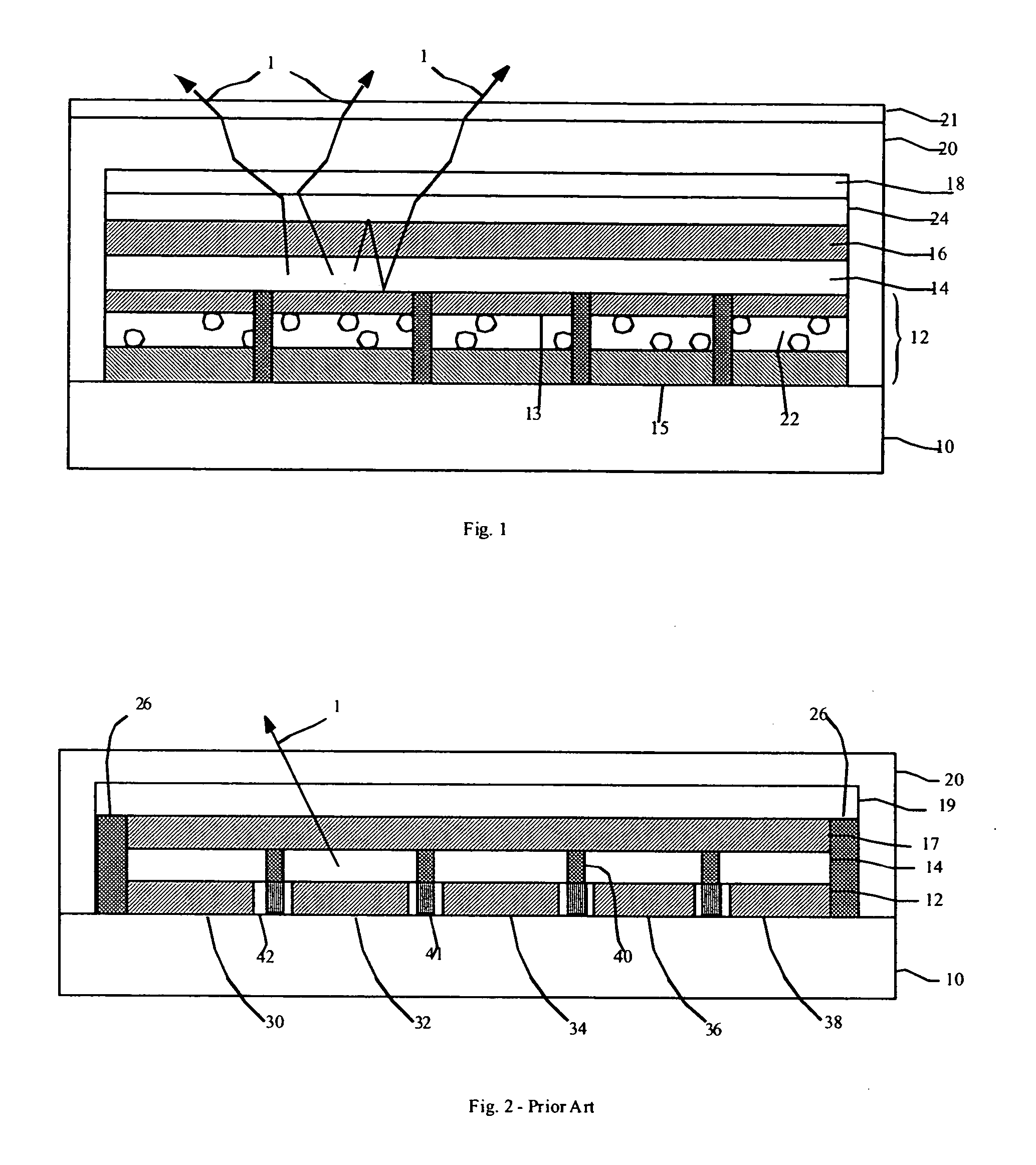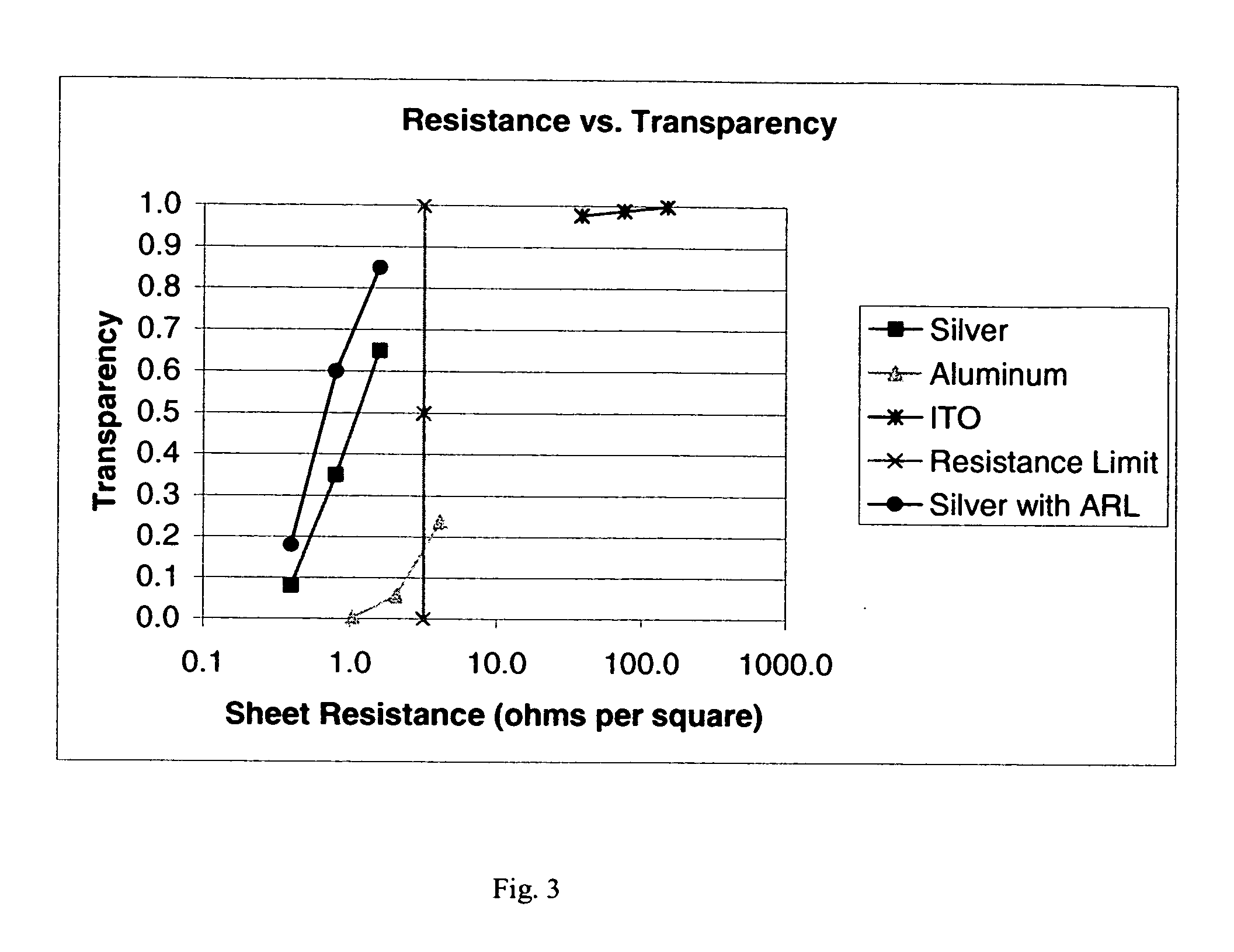OLED device with improved light output
a light-emitting diode and oled technology, which is applied in the direction of discharge tube/lamp details, organic semiconductor devices, discharge tubes luminescnet screens, etc., can solve the problems of limited current carrying capacity of such electrodes, affecting the light output of oled devices, and limiting the amount of light that can be emitted from organic layers, etc., to achieve increased light output, reduce light absorbance, and increase transparency
- Summary
- Abstract
- Description
- Claims
- Application Information
AI Technical Summary
Benefits of technology
Problems solved by technology
Method used
Image
Examples
Embodiment Construction
[0036] Referring to FIG. 1, in accordance with one embodiment of the present invention, an organic light-emitting diode (OLED) device comprises a substrate 10; an OLED formed over the substrate 10 comprising a first electrode 12, a partially transparent second electrode 16 through which light from the OLED is emitted, and at least one layer 14 of organic light-emitting material disposed between the first electrode 12 and the partially transparent second electrode 16; an encapsulating layer 24 comprises one or more component layers deposited on the partially transparent second electrode 16, wherein the encapsulating layer 24 and the partially transparent second electrode 16 combined have a transparency greater than the transparency of the partially transparent second electrode 16 in the absence of the encapsulating layer 24, or wherein the encapsulating layer 24 and the partially transparent second electrode 16 combined have an absorbance less than the absorbance of the partially tra...
PUM
 Login to View More
Login to View More Abstract
Description
Claims
Application Information
 Login to View More
Login to View More - R&D
- Intellectual Property
- Life Sciences
- Materials
- Tech Scout
- Unparalleled Data Quality
- Higher Quality Content
- 60% Fewer Hallucinations
Browse by: Latest US Patents, China's latest patents, Technical Efficacy Thesaurus, Application Domain, Technology Topic, Popular Technical Reports.
© 2025 PatSnap. All rights reserved.Legal|Privacy policy|Modern Slavery Act Transparency Statement|Sitemap|About US| Contact US: help@patsnap.com



